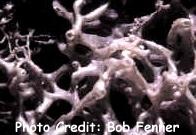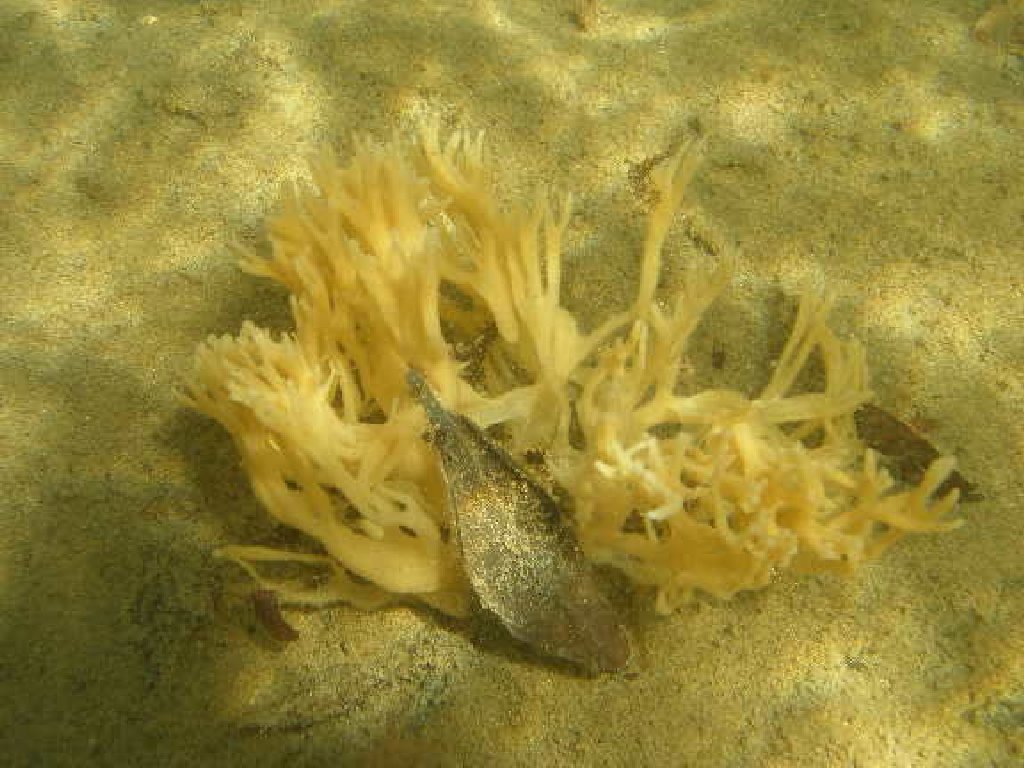florida joe
Well-Known Member
Quote:
Originally Posted by meowzer http:///t/387731/what-is-it#post_3413949
Are you saying that is what mine is??? LOL...I know it is a type of sponge
It is truly amazing how nature finds a way to introduce things into our tanks that we happen upon by chance.
Lois info from the web
Sponges are animals of the phylum Porifera (play /p??r?f?r?/; meaning "pore bearer"). Their bodies consist of jelly-like mesohyl sandwiched between two thin layers of cells. While all animals have unspecialized cells that can transform into specialized cells, sponges are unique in having some specialized cells that can transform into other types, often migrating between the main cell layers and the mesohyl in the process. Sponges do not have nervous, digestive or circulatory systems. Instead, most rely on maintaining a constant water flow through their bodies to obtain food and oxygen and to remove wastes, and the shapes of their bodies are adapted to maximize the efficiency of the water flow. All are sessile aquatic animals and, although there are freshwater species, the great majority are marine (salt water) species, ranging from tidal zones to depths exceeding 8,800 metres (5.5 mi).
While most of the approximately 5,000–10,000 known species feed on bacteria and other food particles in the water, some host photosynthesizing micro-organisms as endosymbionts and these alliances often produce more food and oxygen than they consume. A few species of sponge that live in food-poor environments have become carnivores that prey mainly on small crustaceans.[1]
Most species use sexual reproduction, releasing sperm cells into the water to fertilize ova that in some species are released and in others are retained by the "mother". The fertilized eggs form larvae which swim off in search of places to settle. Sponges are known for regenerating from fragments that are broken off, although this only works if the fragments include the right types of cells. A few species reproduce by budding. When conditions deteriorate, for example as temperatures drop, many freshwater species and a few marine ones produce gemmules, "survival pods" of unspecialized cells that remain dormant until conditions improve and then either form completely new sponges or recolonize the skeletons of their parents.
The mesohyl functions as an endoskeleton in most sponges, and is the only skeleton in soft sponges that encrust hard surfaces such as rocks. More commonly, the mesohyl is stiffened by mineral spicules, by spongin fibers or both. Demosponges use spongin, and in many species, silica spicules and in some species, calcium carbonate exoskeletons. Demosponges constitute about 90% of all known sponge species, including all freshwater ones, and have the widest range of habitats. Calcareous sponges, which have calcium carbonate spicules and, in some species, calcium carbonate exoskeletons, are restricted to relatively shallow marine waters where production of calcium carbonate is easiest. The fragile glass sponges, with "scaffolding" of silica spicules, are restricted to polar regions and the ocean depths where predators are rare. Fossils of all of these types have been found in rocks dated from 580 million years ago. In addition Archaeocyathids, whose fossils are common in rocks from 530 to 490 million years ago, are now regarded as a type of sponge.
The sponge's closest single-celled relatives are thought to be choanoflagellates, which strongly resemble the cells sponges use to drive their water flow systems and capture most of their food. Sponges are generally agreed, also, to not form a monophyletic group, in other words do not include all and only the descendants of a common ancestor, because Eumetazoa (more complex animals) are thought to be descendants of a subgroup of sponges. However it is uncertain which group of sponges is closest to Eumetazoa, as both calcareous sponges and a subgroup of demosponges called Homoscleromorpha have been nominated by different researchers. In addition, a study in 2008 suggested the earliest animals may have been similar to modern comb jellies.
The few species of demosponge that have entirely soft fibrous skeletons with no hard elements have been used by humans over thousands of years for several purposes, including as padding and as cleaning tools. By the 1950s, though, these had been overfished so heavily that the industry almost collapsed, and most sponge-like materials are now synthetic. Sponges and their microscopic endosymbionts are now being researched as possible sources of medicines for treating a wide range of diseases. Dolphins have been observed using sponges as tools while foraging.
Originally Posted by meowzer http:///t/387731/what-is-it#post_3413949
Are you saying that is what mine is??? LOL...I know it is a type of sponge
It is truly amazing how nature finds a way to introduce things into our tanks that we happen upon by chance.
Lois info from the web
Sponges are animals of the phylum Porifera (play /p??r?f?r?/; meaning "pore bearer"). Their bodies consist of jelly-like mesohyl sandwiched between two thin layers of cells. While all animals have unspecialized cells that can transform into specialized cells, sponges are unique in having some specialized cells that can transform into other types, often migrating between the main cell layers and the mesohyl in the process. Sponges do not have nervous, digestive or circulatory systems. Instead, most rely on maintaining a constant water flow through their bodies to obtain food and oxygen and to remove wastes, and the shapes of their bodies are adapted to maximize the efficiency of the water flow. All are sessile aquatic animals and, although there are freshwater species, the great majority are marine (salt water) species, ranging from tidal zones to depths exceeding 8,800 metres (5.5 mi).
While most of the approximately 5,000–10,000 known species feed on bacteria and other food particles in the water, some host photosynthesizing micro-organisms as endosymbionts and these alliances often produce more food and oxygen than they consume. A few species of sponge that live in food-poor environments have become carnivores that prey mainly on small crustaceans.[1]
Most species use sexual reproduction, releasing sperm cells into the water to fertilize ova that in some species are released and in others are retained by the "mother". The fertilized eggs form larvae which swim off in search of places to settle. Sponges are known for regenerating from fragments that are broken off, although this only works if the fragments include the right types of cells. A few species reproduce by budding. When conditions deteriorate, for example as temperatures drop, many freshwater species and a few marine ones produce gemmules, "survival pods" of unspecialized cells that remain dormant until conditions improve and then either form completely new sponges or recolonize the skeletons of their parents.
The mesohyl functions as an endoskeleton in most sponges, and is the only skeleton in soft sponges that encrust hard surfaces such as rocks. More commonly, the mesohyl is stiffened by mineral spicules, by spongin fibers or both. Demosponges use spongin, and in many species, silica spicules and in some species, calcium carbonate exoskeletons. Demosponges constitute about 90% of all known sponge species, including all freshwater ones, and have the widest range of habitats. Calcareous sponges, which have calcium carbonate spicules and, in some species, calcium carbonate exoskeletons, are restricted to relatively shallow marine waters where production of calcium carbonate is easiest. The fragile glass sponges, with "scaffolding" of silica spicules, are restricted to polar regions and the ocean depths where predators are rare. Fossils of all of these types have been found in rocks dated from 580 million years ago. In addition Archaeocyathids, whose fossils are common in rocks from 530 to 490 million years ago, are now regarded as a type of sponge.
The sponge's closest single-celled relatives are thought to be choanoflagellates, which strongly resemble the cells sponges use to drive their water flow systems and capture most of their food. Sponges are generally agreed, also, to not form a monophyletic group, in other words do not include all and only the descendants of a common ancestor, because Eumetazoa (more complex animals) are thought to be descendants of a subgroup of sponges. However it is uncertain which group of sponges is closest to Eumetazoa, as both calcareous sponges and a subgroup of demosponges called Homoscleromorpha have been nominated by different researchers. In addition, a study in 2008 suggested the earliest animals may have been similar to modern comb jellies.
The few species of demosponge that have entirely soft fibrous skeletons with no hard elements have been used by humans over thousands of years for several purposes, including as padding and as cleaning tools. By the 1950s, though, these had been overfished so heavily that the industry almost collapsed, and most sponge-like materials are now synthetic. Sponges and their microscopic endosymbionts are now being researched as possible sources of medicines for treating a wide range of diseases. Dolphins have been observed using sponges as tools while foraging.


